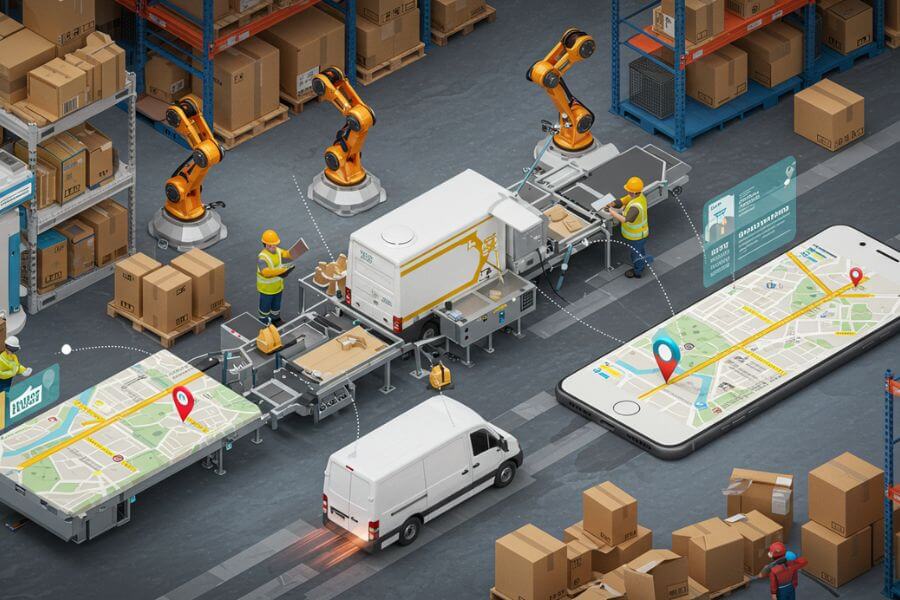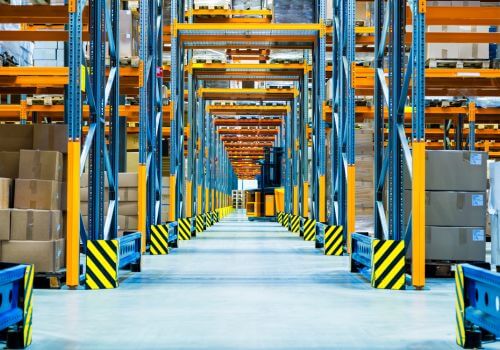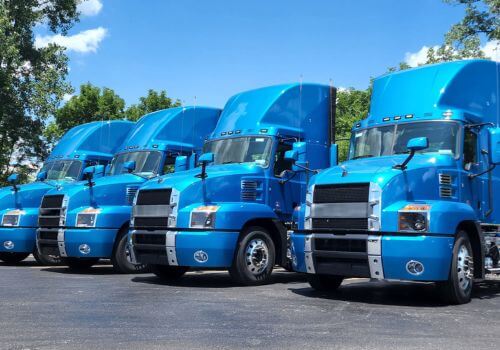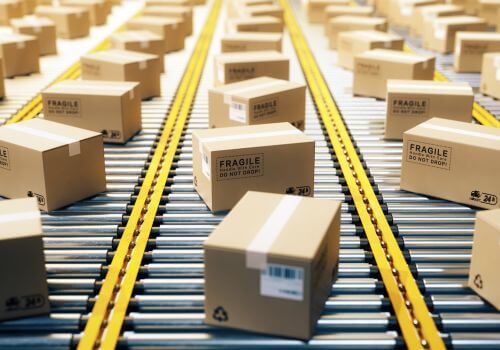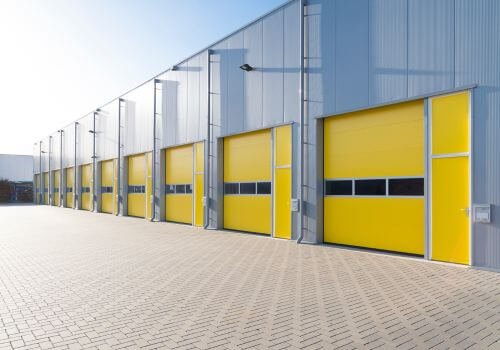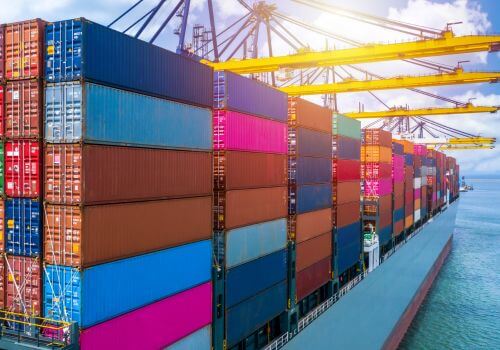In today’s fast-paced world, customers expect to buy what they want, when they want, and how they want. Whether shopping online from their couch, picking up an order at a store, or having something delivered to their doorstep, convenience is key. Businesses must keep up with these expectations, and that’s where omnichannel logistics comes in.
But what is omnichannel logistics, and how does it work? If you’re new to the world of logistics or just starting to explore how to serve customers across multiple channels, this guide is for you. We’ll break down the basics, explain why it matters, and show you how to get started—step by step.
What is omnichannel logistics?
Omnichannel logistics is the process of managing and coordinating the movement of goods across multiple sales channels—such as online stores, brick-and-mortar shops, mobile apps, and marketplaces—so customers have a seamless and consistent shopping experience.
Key Features:
- Multiple channels: Products are sold and fulfilled through various platforms (e.g., website, physical store, third-party marketplaces).
- Unified inventory: Inventory is managed as a single pool, visible and accessible to all channels.
- Flexible fulfillment: Orders can be shipped to customers, picked up in-store, or even delivered from a local store.
In short, omnichannel logistics is about making sure the right product gets to the right customer, through the right channel, at the right time.
What are the importances of omnichannel logistics?
Omnichannel logistics isn’t just a trendy buzzword—it’s a game-changer for businesses and customers alike. Here’s why it matters so much, especially in today’s world.
Customers expect convenience
People shop in many different ways now. One day, they might order online for home delivery; the next, they might want to pick up an item at a nearby store. Omnichannel logistics makes it possible to offer all these options, so customers can choose what works best for them. When you make shopping easier, customers are more likely to come back.
More ways to sell, more chances to grow
When your products are available on multiple channels—like your website, physical stores, and online marketplaces—you reach more customers. This means more sales opportunities. Omnichannel logistics helps you manage all these channels smoothly, so you never miss a chance to make a sale.
Smarter inventory management
With omnichannel logistics, you can see all your inventory in one place, whether it’s in a warehouse or on a store shelf. This helps you avoid running out of popular items or having too much stock sitting around. You can move products to where they’re needed most, which saves money and keeps customers happy.
Better customer experience
A smooth, connected shopping experience makes customers feel valued. If someone buys online and wants to return the item in-store, omnichannel logistics makes it simple. When customers know they can rely on you for easy shopping and returns, they’re more likely to trust your brand.
Staying ahead of the competition
Businesses that offer flexible shopping and delivery options stand out from the crowd. Omnichannel logistics helps you keep up with larger competitors and even beat them by being more responsive to customer needs.
Omnichannel vs. multichannel: What's the difference?
It’s common to hear the terms “omnichannel” and “multichannel” used in logistics, but they don’t mean the same thing. Understanding the difference is important for anyone starting out in this field.
Multichannel logistics
Multichannel logistics means a business sells products through different channels, such as a physical store, an online shop, and maybe a marketplace like Amazon. However, each channel usually works separately. For example, the inventory in the store is managed separately from the inventory in the warehouse for online orders. The systems don’t talk to each other much, so if a product sells out in the store, it might still show as available online, which can cause problems.
Omnichannel logistics
Omnichannel logistics takes things a step further. All the channels are connected and work together as one system. Inventory, order information, and customer data are shared across every channel. This means if a customer buys the last pair of shoes in the store, the online shop instantly updates to show they’re sold out. Or, if someone orders online, the system might fulfill the order from the nearest store instead of a faraway warehouse to speed up delivery.
Summary
- Multichannel: Many ways to sell, but each way is separate.
- Omnichannel: Many ways to sell, but everything is connected.
Example
Imagine you run a clothing store. In a multichannel setup, your website and your physical store each have their own stock. If a customer wants to buy a jacket online but it’s only available in the store, they might miss out. In an omnichannel setup, the website can see what’s in the store and offer the customer the option to pick up the jacket in person or have it shipped from the store.
With omnichannel, customers get a smoother, more flexible shopping experience, and businesses can manage their inventory more efficiently. That’s why more and more companies are making the switch from multichannel to omnichannel logistics.
What are the key components of omnichannel logistics?
Omnichannel logistics might sound complicated, but it’s really about making sure all the different parts of your business work together smoothly. Here are the main pieces that make it all happen.
Inventory management
Think of inventory management as keeping track of all your products, wherever they are. In omnichannel logistics, you don’t just have one stockroom—you might have products in a big warehouse, in several stores, or even on the way to a customer. The goal is to know exactly how many items you have and where they’re located at any moment.
- Centralized tracking: All your inventory is recorded in one system, so you can see what’s available everywhere.
- Real-time updates: When something sells in one place, the numbers update everywhere else automatically.
Order management
Order management is about handling customer orders from start to finish. When someone buys something—whether online, in a store, or through an app—you need a system that keeps track of that order and makes sure it gets to the right place.
- Smart routing: The system decides the best place to ship the order from, whether that’s a warehouse or a nearby store.
- Order status: Customers can check where their order is at any time, from the moment they buy until it arrives.
Flexible fulfillment options
Customers want choices for how they get their purchases. Omnichannel logistics gives them several options, making shopping more convenient.
- Home delivery: Ship products directly to the customer’s address.
- Store pickup: Let customers buy online and pick up their order at a nearby store.
- Ship from store: If a store has the item in stock, it can ship directly to the customer, sometimes faster than a warehouse.
Returns and reverse logistics
Returns are a normal part of shopping, and omnichannel logistics makes them easier for everyone.
- Easy returns: Customers can return items however they want—by mail, in a store, or at a pickup point.
- Efficient processing: Returned items are quickly checked and put back into inventory or handled according to your return policy.
Technology and integration
None of this works without the right technology. Omnichannel logistics relies on software that connects all your sales channels, inventory locations, and customer data.
- Connected systems: Your online store, physical stores, warehouses, and delivery partners all share information.
- Data insights: You can see which products are selling best, where inventory is low, and how quickly orders are being fulfilled.
How does omnichannel logistics work? (Step-by-step)
Understanding how omnichannel logistics works can seem tricky at first, but it’s really just a series of connected steps that help get products to customers in the way they want.
Step 1: See all your inventory in one place
Imagine you have products in different places—some in a big warehouse, some in your local stores, and maybe even some on the way from your suppliers. With omnichannel logistics, you use technology to keep track of everything in real time, so you always know exactly what you have and where it is. Think of it as having a bird’s-eye view of all your stock, no matter where it’s located.
Step 2: Customer places an order - anywhere
A customer can shop however they like: on your website, through a mobile app, or by walking into a store. No matter where the order comes from, your system treats it the same way. This flexibility is what makes the experience feel smooth and connected for the customer.
Step 3: Find the best place to fulfill the order
Once the order is in, your system gets to work behind the scenes. It looks at all your inventory locations and decides the smartest place to ship the order from. For example, if the customer lives near one of your stores and the item is in stock there, the system might choose to ship from that store instead of a distant warehouse. This helps get the order to the customer faster and can save on shipping costs.
Step 4: Pack and send the order
After the best location is chosen, your staff picks the item, packs it up, and gets it ready to go. If the customer wants home delivery, the package is shipped out. If they’ve chosen to pick it up in-store, the order is set aside and the customer is notified that it’s ready.
Step 5: Customer receives their order
Now comes the fun part for the customer! They either receive their package at home, come to the store to pick it up, or even use curbside pickup if you offer it. The whole process is designed to be quick and convenient, no matter which option they choose.
Step 6: Easy returns - any chanel
If the customer changes their mind or something isn’t right, they can return the item however they want. Maybe they bought it online but want to return it in-store, or vice versa. Omnichannel logistics makes this possible, making returns as simple and hassle-free as buying.
Real-world examples of omnichannel logistics
To really understand how omnichannel logistics works, let’s look at how some well-known companies use it to make shopping easier and more convenient for their customers.
Walmart
Walmart is a great example of a company that gives customers lots of choices. You can shop on their website or app, then decide if you want your order delivered to your home, or if you’d rather pick it up at a nearby store. They even offer curbside pickup, where you don’t have to leave your car—an employee brings your order out to you. Walmart’s stores also act as mini-warehouses, so sometimes your online order is shipped right from a local store instead of a big warehouse. This helps Walmart get products to customers faster and saves on shipping costs.
Nike
Nike has made it easy for customers to shop however they like. You can use their website or app to see what products are available at your local store. If you find something you want, you can reserve it online and then pick it up in person. This means you don’t have to worry about something being out of stock when you get there. Nike’s systems keep track of inventory in real time, so customers always know what’s available. Whether you shop online or in a store, it all feels connected and simple.
Target
Target is another retailer that’s made omnichannel logistics a big part of their business. When you shop with Target, you can choose to have your order shipped, pick it up inside the store, or use their curbside pickup option. Their website and app show you exactly what’s in stock at each store, so you can make quick decisions. Target’s stores also help fulfill online orders, which means customers can often get their purchases faster. By giving shoppers several ways to buy and receive products, Target makes shopping easy and convenient.
Frequently asked questions about omnichannel logistics
Q. What challenges can companies face with omnichannel logistics?
Common challenges in omnichannel logistics include complex inventory management, high operational costs, integrating data across channels, managing returns efficiently, and ensuring scalability as the business grows.
Q. Why is inventory visibility important in omnichannel logistics?
Inventory visibility in omnichannel logistics ensures that both staff and customers know what products are available and where, helping to prevent stockouts, reduce overstocking, and enable faster order fulfillment.
Q. How do returns work in omnichannel logistics?
Omnichannel logistics enables customers to return products through any channel, whether they bought online or in-store, making the process easier for customers and more efficient for businesses.
Q. What role does technology play in omnichannel logistics?
Technology is crucial in omnichannel logistics, as it connects systems like order management, warehouse management, and point-of-sale, allowing real-time data sharing and streamlined operations across all channels.
Q. Can small businesses benefit from omnichannel logistics?
Yes, small businesses can benefit from omnichannel logistics by integrating their sales channels, using third-party logistics providers, and adopting cloud-based tools to offer flexible delivery and pickup options.
Q. How does omnichannel logistics help reduce delivery times?
Omnichannel logistics can reduce delivery times by fulfilling orders from the closest location to the customer, such as a local store or micro-fulfillment center, instead of relying solely on a central warehouse.
Q. How does omnichannel logistics support last-mile delivery?
Omnichannel logistics supports last-mile delivery by allowing businesses to use multiple fulfillment locations and carriers, enabling faster, more flexible shipping options like same-day or next-day delivery.
In summary, Omnichannel Logistics is the integrated management and coordination of all logistics activities—like inventory, order fulfillment, and delivery—across multiple sales channels to provide customers with a seamless and unified shopping experience, whether they buy online, in-store, or through other platforms.

